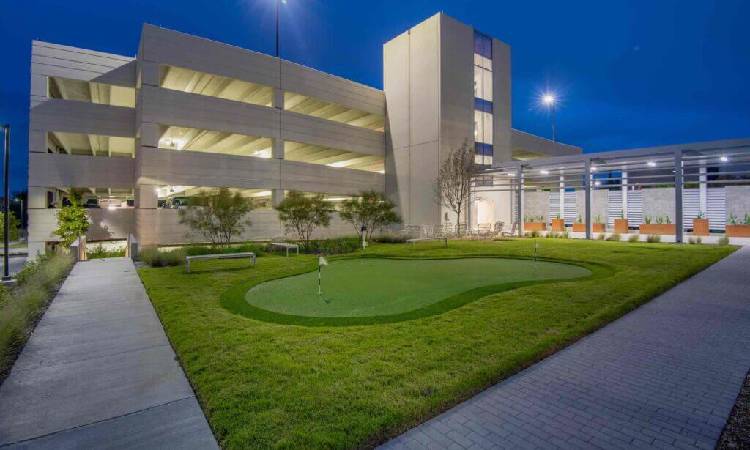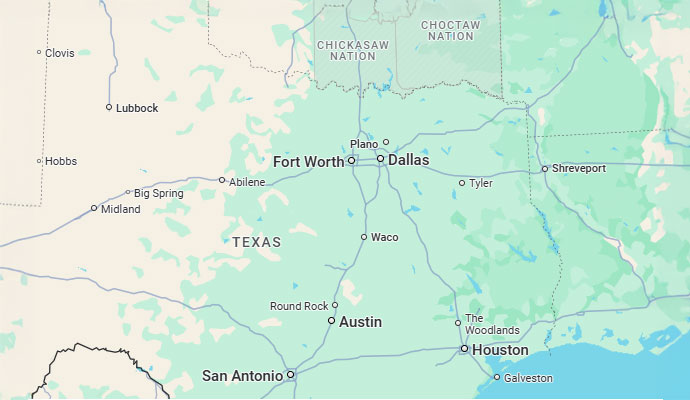
10 Tips For Maintaining An Artificial Grass Putting Green
The installation of an artificial grass putting green will be a valuable asset for your home or business and a great selling feature if the property is ever listed for sale. A synthetic grass putting green is an attractive option for golf enthusiasts, homeowners who want more excitement in their yards, and businesses, condos, apartment, and townhome complexes that want to offer more activities for their residents.
Artificial grass putting greens are low maintenance, offer a consistent playing surface, allow for year-round use in any weather, are durable and versatile, help conserve water, and are resistant to pests and allergens. Not to mention, they are a lot of fun! While installing a synthetic turf putting green is certainly a project that an experienced do-it-yourselfer could manage, having experience in putting green maintenance can be valuable for achieving the very best installation possible. It could be advantageous to let a professional putting green installer manage your project.
Maintaining a putting green is quite easy, but the key is to perform regular cleaning of the artificial putting green so debris doesn’t pile up and make it unusable. With consistent care, it will last a long time and provide optimal performance. Below are ten tips on how to properly maintain an artificial grass putting green.
Ten Tips for Maintaining an Artificial Grass Putting Green
- 1. Regular Cleaning: The removal of debris such as leaves, twigs, acorns, and rocks regularly will help the putting green look its best. A leaf blower comes in handy for removing debris via a stiff air current to not grind it further into the turf. A broom will help as well to keep debris from accumulating too much on the surface.
- 2. Brushing: The utilization of a stiff brush or power broom to comb the synthetic fibers on a regular basis will help keep the artificial grass blades upright and help to keep any infill evenly distributed, thus allowing for a smooth and accurate ball roll.
- 3. Rinsing: By occasionally rinsing down the putting green surface, dust, pollen, and small particles will be rinsed away so the artificial grass blades will maintain their flexibility. Washing off the surface is also a great way to get rid of any bird or accidental pet mess.
- 4. Weed Control: Even though synthetic grass does not typically make a good substrate for weed growth, it is still possible that a few weeds could pop up, especially if dirt is allowed to blow in and settle into the substrate. It’s good to occasionally inspect the edges and seams for unwanted vegetation. A good practice is to remove weeds as soon as they are noticed to prevent them from spreading further. A good weed killer or preventer may be necessary if weeds continue to infiltrate the artificial turf.
- 5. Stain Removal: If stains appear on the putting green, it’s a good idea to promptly remove them using a mild detergent or a specialized artificial grass cleaner. Don’t use harsh chemicals or bleach, since they can damage the artificial grass fibers.
- 6. Infill Maintenance: Whether the infill is silica sand, rubber granules, or similar, it’s good to ensure that it is evenly distributed across the entire putting green. This will help in maintaining proper ball roll, speed, and consistency when putting.
- 7. No Pets: The best policy is to encourage pets to avoid putting green areas in the first place. This can be done through training or barriers to entry. Even though pet waste can be easily picked up and the residual rinsed off, the last thing anyone wants is a lingering pet smell while putting. If an accident does occur, promptly pick up any pet waste and rinse the affected area as soon as possible. The majority of artificial grass is manufactured to be pet-friendly and easy to clean.
- 8. Avoid Furniture or Equipment: It’s better to not have heavy furniture or equipment on the putting surface so the grass fibers aren’t compressed to the point of creating an uneven surface. If furniture has to be placed on the putting green, it’s good to move it periodically to prevent any wear patterns.
- 9. Inspect Regularly: Inspecting the putting green every so often can identify any signs of wear and tear, or loose seams. It’s a good idea to address any issues right away to prevent them from getting worse.
- 10. Annual Maintenance: Considering a thorough yearly maintenance program may be a good way to avoid any costly repairs. Professional maintenance programs are available at most artificial grass companies and may include services such as power brushing, infill top-up, seam inspections, patching, and more.
In summary, it is a good idea to regularly spend some extra time maintaining an artificial putting green surface to avoid any costly repairs down the road. Checking with the artificial grass manufacturer for specific care instructions and following their guidelines and specific maintenance requirements should help keep your synthetic turf putting green in top condition for many years.
How To Smooth Out Artificial Putting Green?
Here’s how to smooth out an artificial putting green:
- 1. Brush the Surface: Use a stiff-bristled brush or power broom to gently brush the putting green in the opposite direction of the grass fibers. This helps lift and smooth the surface.
- 2. Add Infill: If your artificial putting green uses sand or rubber infill, apply a fresh layer to fill in any low spots and distribute it evenly across the surface. Brush it in thoroughly to smooth out uneven areas.
- 3. Water and Roll: Lightly mist the surface with water, then use a lawn roller or a heavy flat object to press down and smooth the surface. This will help flatten any wrinkles or bumps.
- 4. Regular Maintenance: Ensure regular brushing and cleaning to keep the surface smooth and free of debris, which can cause unevenness over time.
By following these steps, you can maintain a smooth, professional-quality artificial putting green.


